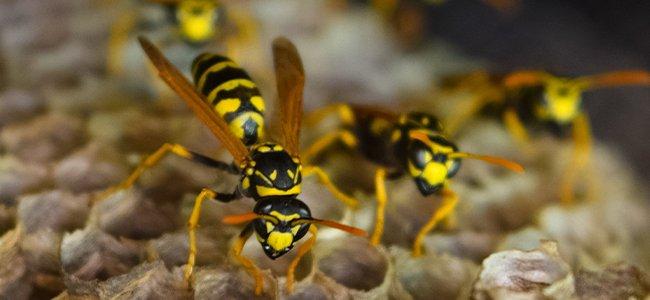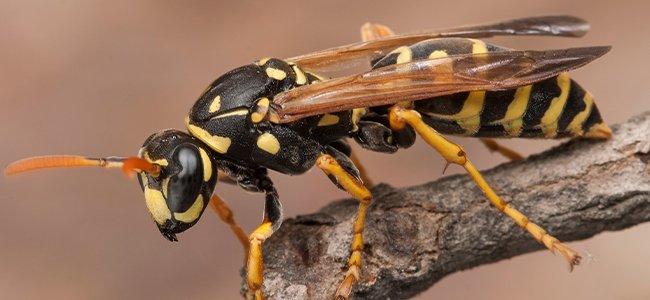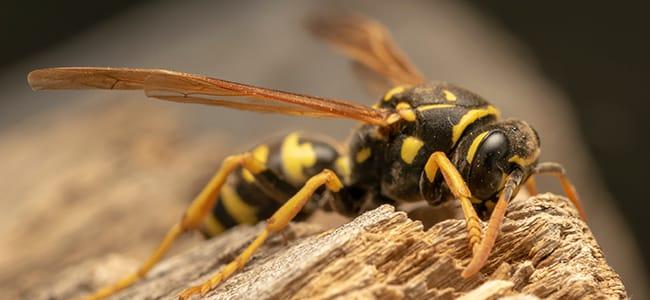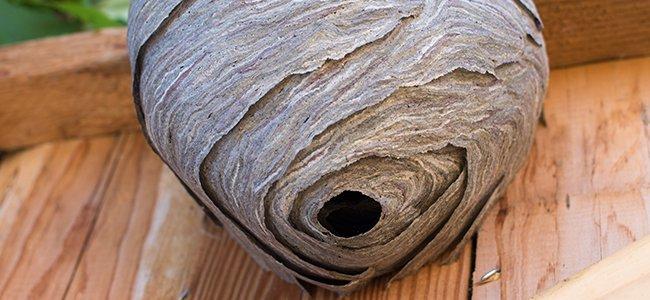
How To Keep Wasps Away From Your Washington D.C. Yard
08/23/2021
Stinging insects are extremely dangerous pests here in Washington D.C. For aggressive varieties such as wasps, home and business owners find themse...
READ MORE >
Paper Wasps
Paper wasps are known for their intricate nests that hang like chandeliers in out of reach places or other hideaways. These nests are built with many open chambers where the wasps reside. While they are quite a work of art in the natural world, they house some protective artists. The wasps are fierce defenders of their famous homes and will sting at will when threatened. They are not hesitant when dealing with threats and unlike honeybees they can sting over and over again.
There are around 300 species of paper wasp around the world and 22 of them are present in the United States. There are two species common to the Maryland, Virginia and DC areas. They both have the distinctive pinched midsection and slender wings of a wasp. One such species, Polistes dominulus, is from Europe and has yellow stripes that resemble those of a yellow jacket.
Wasp stings are painful and often cause mild swelling near the sight of the sting. Because of their aggressive nature, those with severe allergies are urged to take extra precaution.
Bald Faced Hornets
Bald Faced Hornets create the stereotypical nests referenced in the children’s cartoon “Winnie the Pooh.” But where Pooh Bear got it wrong is what lies inside those nests. Not honey and docile honey bees, but rather vicious guardians of their wasp nest. Bald Faced Hornets are not true hornets and react to threats against their homes much like other wasps with a ferocity best left to the professionals.
Bald faced hornets get their name from their distinctive white faces (and are sometimes known as a white-faced hornet) but are otherwise mostly black in the torso. Fully grown, the insects reach about ¾ inch in length.
Bumble Bees & Carpenter Bees
Bumble bees are sneaky pollinators that are the culprit for many a stung foot. Watch out for these little buzzing fuzz balls when trekking barefoot this summer as they are quick to sting when stepped upon. With their nests in the ground, they frequently find themselves floating just a few inches in the air staying close to home pollinating the local flora.
Carpenter bees are vandals. They are not the most aggressive stingers on our list but they can certainly cause headaches for homeowners. These insects carve holes in wood to create their nest. The damage they cause here can be doubled if woodpeckers find bee larvae inside the nests particularly appetizing. Rather than leave your house open to structural damage from some nuisance insects, call American Pest’s experts to protect your home from further damage.
Carpenter bees and bumble bees are similar in appearance but very different in many other distinguishing factors. Carpenter bees set up their homes in wood tunnels, while bumble bees have nests in the ground. Bumble bees have a fuzzy appearance and carpenter bees are smooth and glossy. Carpenter bees have a tendency to “hover” similar to how a helicopter flies. Bumble bees stay low near their nests in the ground and surrounding flowers.
Beneficial Insects
These insects are wonderful for your summer gardens but less so for cookouts, lazing by the pool, and many other outdoor activities. They are a nuisance that pack a punch in their sting and can be a real hindrance to enjoying the outdoors safely. When the bad outweighs the good, it’s time to call in the professionals at American Pest to remove the threatening insects carefully.

08/23/2021
Stinging insects are extremely dangerous pests here in Washington D.C. For aggressive varieties such as wasps, home and business owners find themse...
READ MORE >

06/27/2021
Some pests are so harmless that you almost feel bad for getting rid of them. Wasps, on the other hand, only cause relief when they’re gone. S...
READ MORE >

04/09/2021
Keeping your yard a safe and pleasant place to spend time, free of wasps and hornets, doesn’t just happen by itself. It takes thought and act...
READ MORE >

09/30/2020
Spending time in your Maryland yard is one of the best things about living here. Whether you’ve created a backyard oasis or enjoy rocking on ...
READ MORE >

Protect your home and family from nuisance and potentially damaging pests with a Preferred Care home pest control plan. Starting at $49/month

Don't let the bed bugs bite a second longer. Contact American Pest for the most comprehensive bed bug control in the industry. Learn More

Our certified rodent control pros will put an end to your frustration by getting rid of rats and mice inside your home. Learn More

Say goodbye to wood-destroying termites in your home when you contact American Pest for expert termite control. Learn More

Trust American Pest to deliver professional backyard tick control services that are guaranteed to get results. Learn More

Don't spend the warm-weather season indoors, find out how American Pest's professional treatments get rid of mosquitoes. Learn More
Fill out the form and recieve feedback in less than 5 minutes. For immediate service please call.